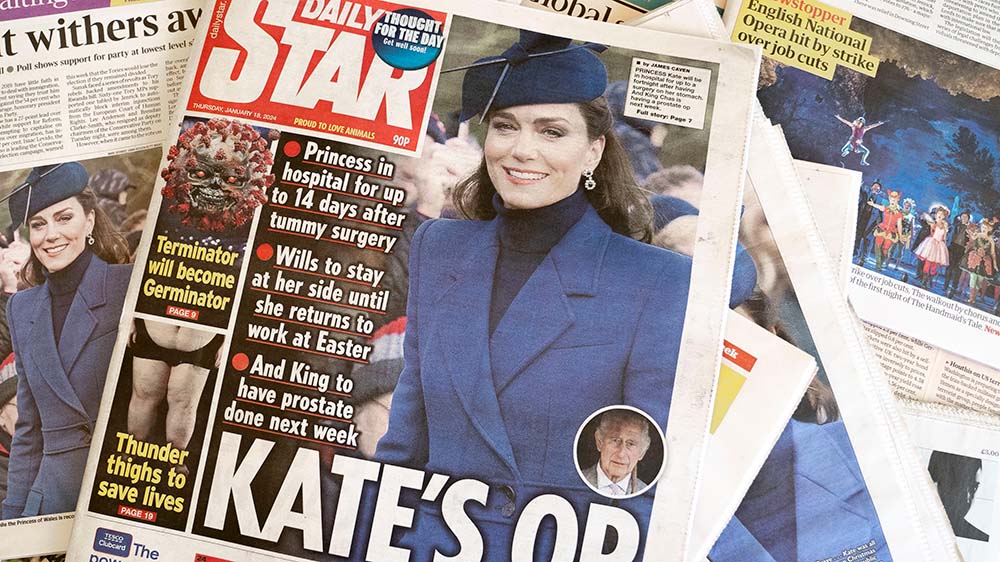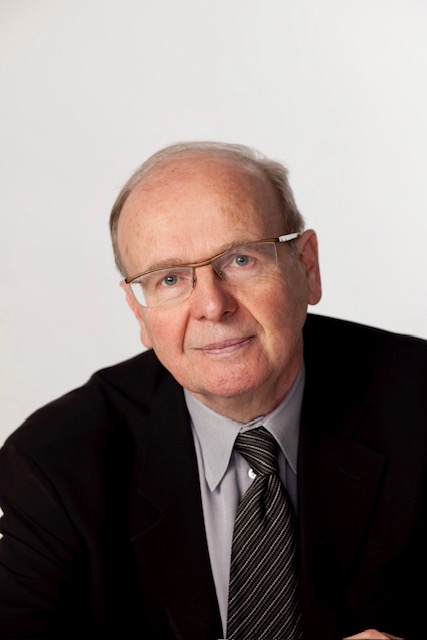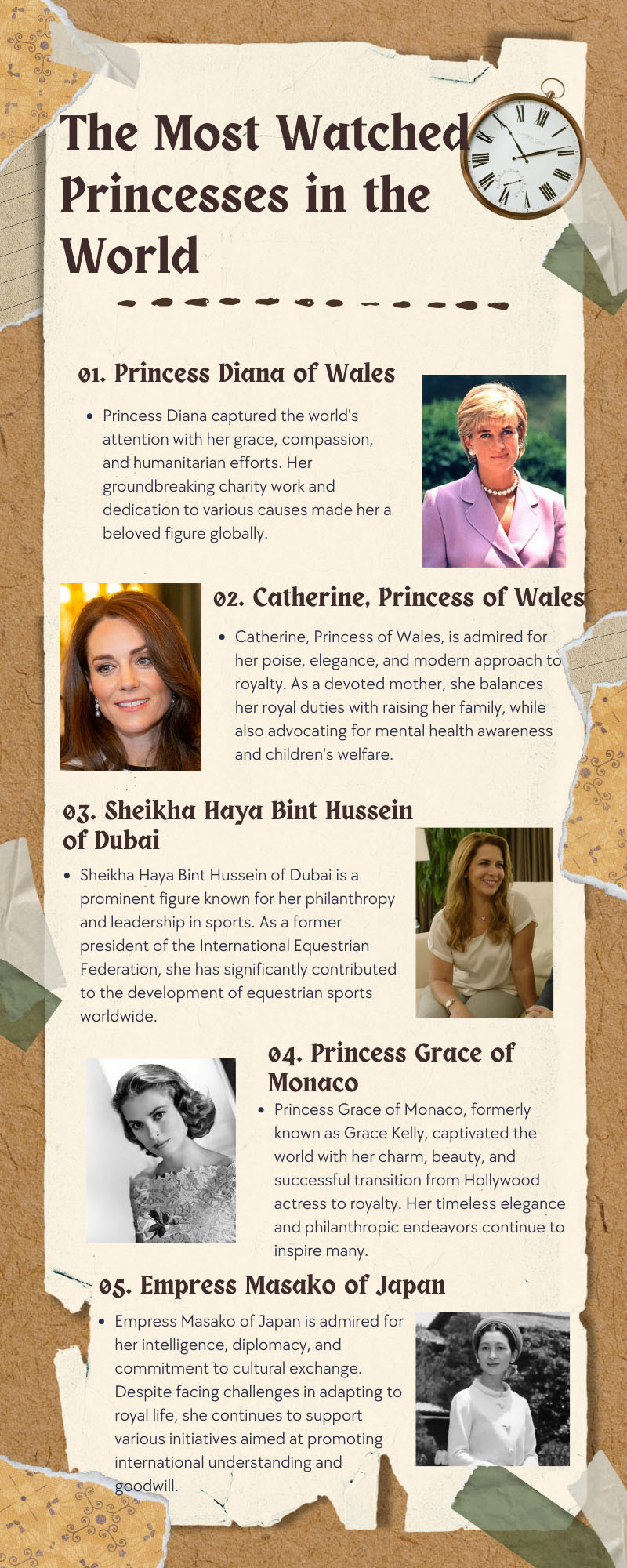The Princess of Wales absence from public life allowed rumours to swirl. What does this tell us about the Royal Family’s changing relationship with the press?

Since Christmas Day 2023, Kate Middleton’s whereabouts have dominated headlines and social media sites across the world with everyone asking the same question: where is she?
The lack of updates on the Princess of Wales meant conspiracy ran amok as people all over the world weighed in on the strange situation. Theories ranged from suspected divorce to cosmetic surgery.
According to palace courses, she had abdominal surgery in a London clinic but the palace has told people little else. Cardiff University professor Richard Tait, ex-editor-in-chief of ITN, says that this lack of information is part of the reason for a rise in conspiracy theories. “She’s clearly had serious surgery, she’s got three young children, it’s perfectly reasonable in those circumstances, that she shouldn’t be giving weekly bulletins on her health and letting journalists into her home,” he says. “But that did create more of a vacuum than was necessary, which have been filled by mad conspiracy theories. And the inability of the royal families, PR advisers, to deal with those, the impact of those mad conspiracy theories is one of the reasons why there’s a problem.”
“Historically, the royal family were able to manage their image and to some extent control their relationship with the media. The broadcasters had to negotiate to have coverage of royal visits or royal tours, there was a small group of royal correspondents who were meant to be getting sort of confidential briefings made like specialist correspondents in other areas.”

He believes the monarchy is losing its grip on the public as they cannot navigate the messy world of social media. “The royal family has historically been adept at using the media to shape public opinion. But I think we’ve got to look at the current situation they are, they’re an institution in quite a lot of trouble. The King, who is the head of state has got cancer and it’s not by any means clear how serious his illness is. The departure of Harry and Megan, and the disgrace of Prince Andrew means … [they use] social media to promote what they do.”
In fact, this recent media crisis surrounding Kate’s condition did not occur in a vacuum, but rather within the broader context of challenges facing the monarchy as an institution.
“And on top of that, you’ve got to think in Britain as a whole, you got a slightly a sense of disillusionment with institutions. A society that’s made a huge decision in 2016 to leave the European Union, which is now turning out. All the polls suggest to have disillusioned a lot of people, they feel they’ve been lied to they, it hasn’t turned out the way they wanted it to. They’re worried about the health service, they’re worried about inflation. There’s quite a sour atmosphere in the country. And the royal family are quite an important sort of lightning rod for national feeling and the National feeling currently, I think is quite done.”
In the past the Royal Family where able to control the narrative they wished to push, “The royal family since the Charles and Diana episodes, have employed professional public relations consultants and managers to manage their image and to advise them, what seems have happened on this occasion is that they’ve been overtaken by a series of missteps linked very much to the enormous power of social media in these areas now,” Richard Tait explains.

With the rise of social media, maintaining public image has become more challenging.
“If you embrace social media, as a royal family has as a means of communication, you have to accept that you take the rough with the smooth to some extent that once you’re on social media, you’re vulnerable to people on social media writing or publishing broadcasting, nonsensical things about you.”
Richard Tait argues this event is a symptom of a larger problem whereby journalists no longer report on facts and are instead clouded by narratives on social media, he says, “I’m pretty sure that they (the BBC) ran a TikTok clip of somebody saying it’s not Kate, it’s a fake picture. That is nonsense, nonsense, nonsense. I have a bit of a problem running that because you know it’s a lie. So why are you running it? You’re the BBC. Why are you running some idiot saying that’s it is fake? You don’t even need to bother to show it. I think the BBC, and the media in general, are getting themselves in a bit of a mess with untruths on social media, because the most sensible thing you can do with untruths on social media is ignore them.”
Relating back to his days on the job Richard Tait says, “When I was editor of ITN, or when I was a governor of the BBC, I worked with organizations that spent very large amounts of money on compliance on training their staff in impartial and truthful journalism, in having a complaints procedure in having fact checking, and all that all those costs are currently not really met by Facebook and X and TikTok, because they regard themselves broadly as platforms and not as publishers.”
The question remains how will the Royal Family continue to maintain control of their public perception and how should traditional media outlets respond in the age of fake news, AI and conspiracy.
“I would say that the relationship with the audience, with the readers, and with the public should be one that you don’t tell people lies. You may tell them things that they don’t agree with. You may have opinions people don’t like, but the notion that journalists should not be peddling lies is a betrayal of the profession,” argues Richard Tait.
Historically, a tradition as old as the monarchy itself has dictated the Royal Family’s relationship with the press: “Never complain, never explain”.
The strategy attributed to former Prime Minister Benjamin Disraeli has become synonymous with the British monarchy’s public relations approach.
Public relations expert Richard Thomas from Cardiff University says, “It basically means they won’t comment on general things. And if you notice, when a new royal is born or a royal dies like Prince Philip. They put like a very short announcement on the gates of Buckingham Palace and that’s their only official communication.”
However, this tradition of restraint and secrecy has sometimes been viewed as going too far. “Even in the face of Diana’s death, the royal family was slow to respond,” says Richard Thomas . “It took several days for them to mention it. In fact, there was no half-mast flag over Buckingham Palace. And it was only sort of political pressure from Tony Blair, the prime minister that actually forced them into making comments and then the Queen did an address to the nation.”
The tradition of restraint and secrecy is also exemplified by George VI’s grave illness, unknown even to his daughter, Princess Elizabeth, during her 1952 tour of Kenya.
“But there was once back in the late 60s, early 70s, they did a family documentary showing the family sort of situation. Not necessarily interviewed, but afforded the world a fleeting glance into the Royals’ lives,” Richard Thomas said.
“The relationship between the royal family and the media has always been a difficult one, in a sense that the media struggles to get any cogent information from the Royals. They never seem to react to stories. So the problem with their approaches, I would suggest is that it creates a press vacuum, there is no information. So what happens in an accurate in a vacuum, it is filled by something else – with conspiracy theories, fake news. And this has always been the case.”

